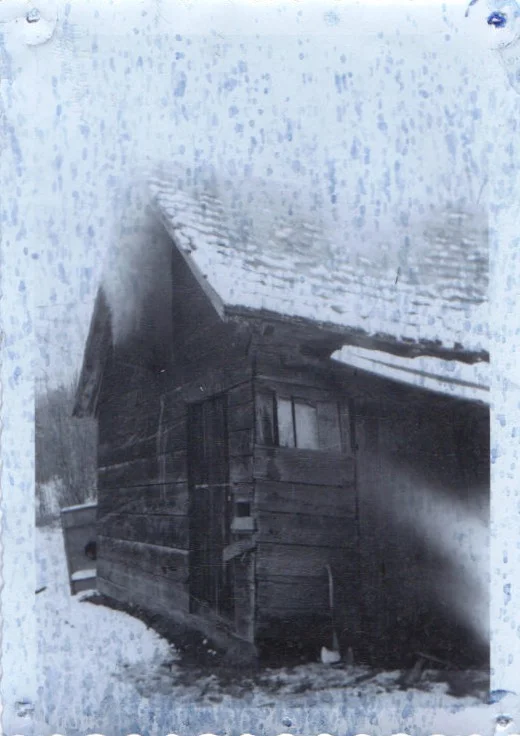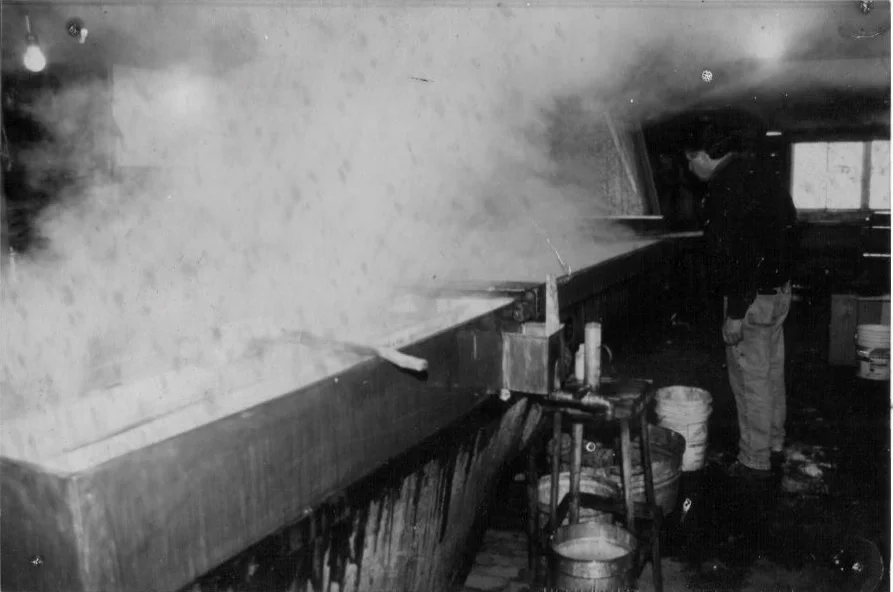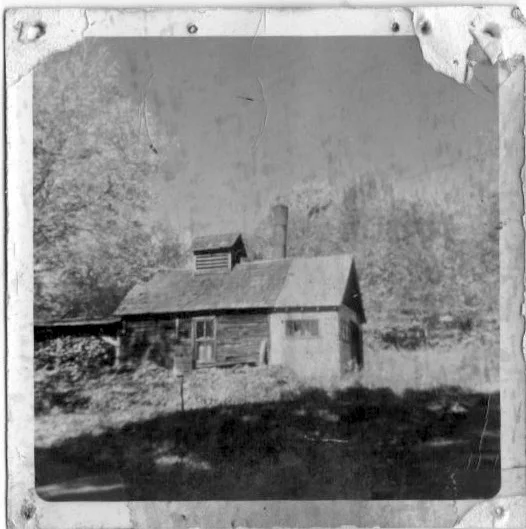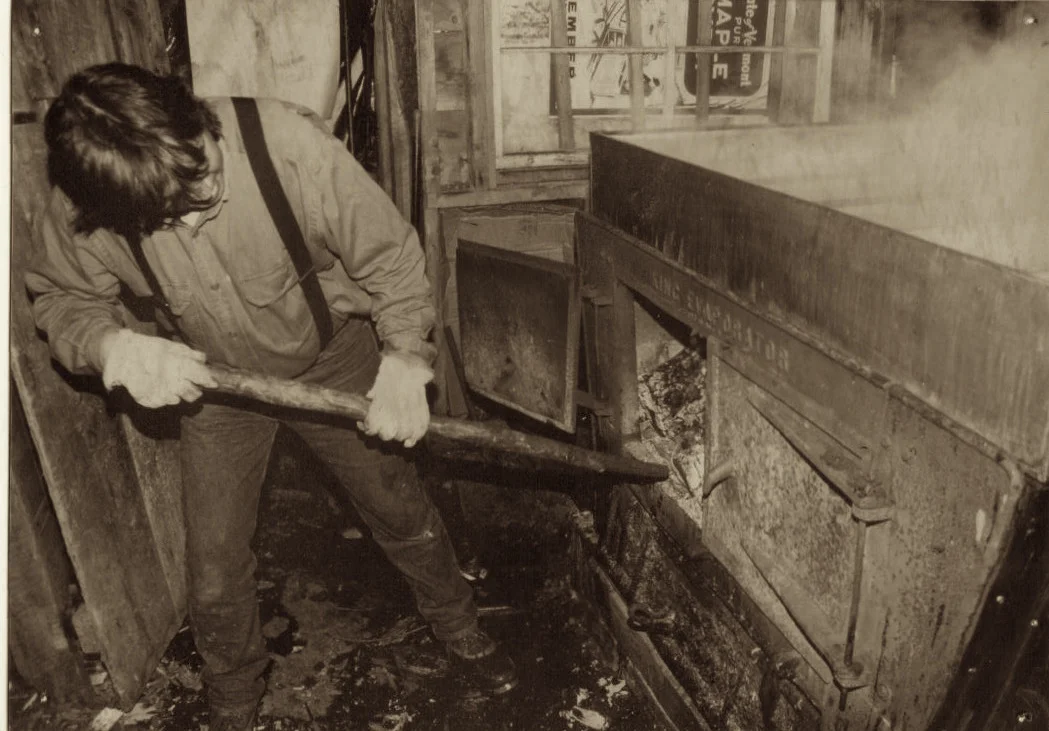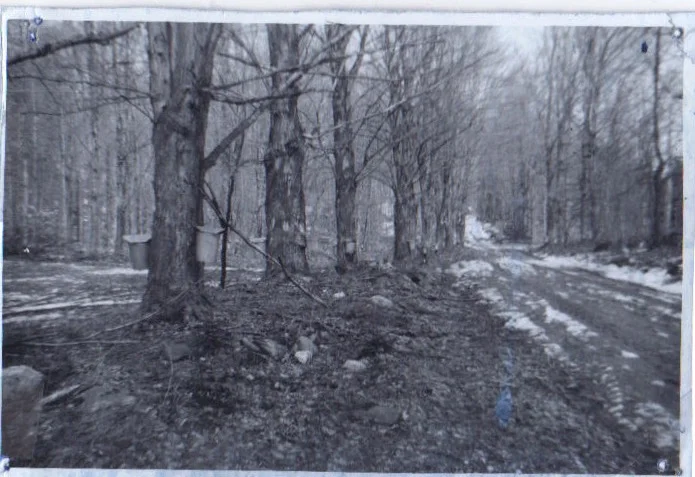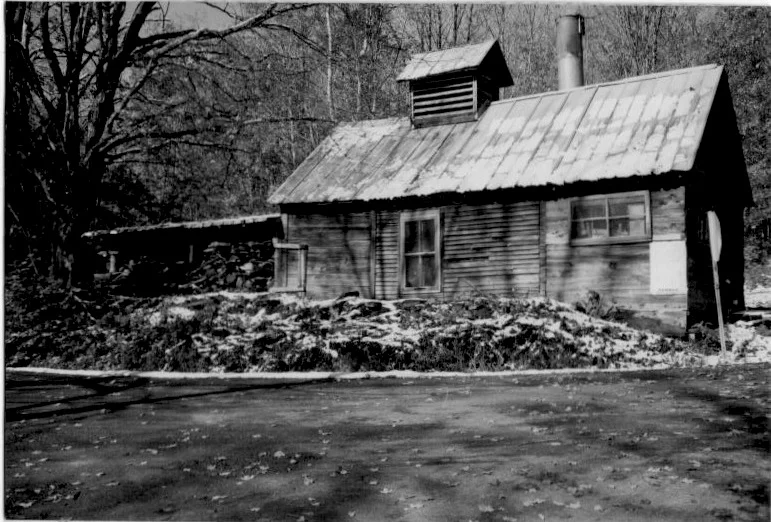A Short History of the West Hill Sugar Orchard
Sugar house facing east and Golf Course Road before the 1963 addition. Note the wooden shingle roof.
Our eight acres of maples has hosted a sugaring operation since 1937 when the brothers Ernest Ralph and Melvin Livingston built a sugar house nestled between West Hill Road and what was then Ernest’s haying fields. In the early days, sap was collected in galvanized steel buckets and brought to the sugar house by horse-drawn sledge so that it could be boiled on five by twelve King Evaporator. The operation stayed much the same with occasional updates, such as the sugar house extension in 1963 or acquisition of bunkhouse for boilers just up the hill. Eventually the buckets were replaced with tubing that supported some fifteen-hundred taps and gravity fed into two five-hundred gallon galvanized steel sap tanks which kept the evaporator rolling. At the same time, the next generation of sugarers — Melvin’s son Arnold and one Jesse Cota — was learning the art of sugaring. At Ernest’s passing, Arnold took over the stewardship of the orchard and continued to welcome visitors with a mug of hot sap or splash of fresh sugar on snow. In the mid-1990’s, the sweet steam and laughter in the sugarhouse brought a young Glenn Cahilly-Bretzin across the road to watch Arnold at work, while the trees often doubled as his playground. Eventually something of what he saw sunk in and in 2014 Glenn became the next custodian of the orchard.
Boiling on the original "King" Leader Evaporator
Ernest washing buckets
New addition on the front of the Sugar House 1963
By that point, the operation was showing its age and needed a phased restoration to ensure it could continue producing high quality syrup and a welcome space during the sugaring season. It was decided that the operation should harken to its roots while updating the equipment for 21st-century standards. The old lines were removed and replaced with food-grade buckets; the lead-soldered evaporator pans and sap tanks were replaced with stainless steel counterparts; and the bottling — now exclusively in glass — in glass was processed through new filters and stainless steel canning kettles. Then in 2018 the sugarhouse, which had been sinking into the hillside, was given a new foundation and frame while preserving the original wood siding from the original building. Today, we are proud to carry on in Ernest and Arnold’s legacy in protecting the trees, producing the finest maple syrup possible, and warmly welcoming you to enjoy the sweet steam with us during the season!
Ernest with his team and tank sleigh to gather the sap
Arnold Livingston at the boil
Missy, Janie, and Billy at the Sugar House in 1958
If you have any stories about or photos of the sugar orchard we would love to know them! Please contact us at westhillsugarorchard@gmail.com so that we can compile memories of the orchard and archive them for future generations of sugarers stepping in their tradition.
